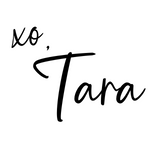Just because I’m a trained copyeditor doesn’t mean I know all the things — or don’t need resources to help me out as I’m editing.
Especially if you’re just starting your freelance editing business, you should have some tried-and-true resources to turn to while you’re editing and proofreading. You probably already have resources and tools you use for other aspects of your life (like a recipe or cookbook when you’re making dinner), so why wouldn’t you have them for your editing business as well?
Here are my favorite tools and resources I use while editing and proofreading:
My Go-To Resources:
- The Chicago Manual of Style: If you need to know style, usage, and grammar for books, this is the best resource for it! I love the hyphenation table and the fact that it has both digital and print versions!
- Merriam-Webster: Nothing like a good ol’ dictionary to bring you back in time! You don’t even need a physical copy anymore — you can find all the words you need from a simple search on their site!
- Diversity Style Guide: Awareness about the words we use has become more and more important over the past few years. This guide is great if you need to know how to word something with accuracy, authority, and sensitivity.
- Conscious Style Guide: Similar to the Diversity Style Guide, this guide will help you quickly search for the most appropriate terms when writing or editing about diversity or sensitive subjects.
- House style guide/style sheet: A house style guide refers to a company’s documentation that dictates its standards and preferences for its content. It can include things like preferred spellings, punctuation and capitalization rules, font choices, and formatting styles. These are incredibly important when editing manuscripts for a publisher.
- Grammar Girl: If you’re a grammar nerd like me, you’ll love Grammar Girl. She has “quick and dirty” grammar tips, as well as a podcast about all things grammar.
- Grammarly: Grammarly is a “writing assistant” to help you find errors in your writing (or editing). There’s a Google Chrome extension you can add to your browser that will help you quickly find and fix errors in your writing and documents. It pops up on the side and will automatically fix any errors that pop up. It’s certainly not a replacement for a human editor, but it can catch easy typos.
- Good ol’ Google: While Google might not be the best resource or most accurate, a simple Google search can save you so much time and energy if you’re trying to find something quickly. Don’t be afraid to pull up your browser and do a quick search when you’re in a pinch!
My Go-To Editing Tools:
- Microsoft Word (or Google Docs/Adobe): These are pretty obvious, but Microsoft Word or Google Docs is key when you’re writing or editing. Microsoft Word is the standard for book publishing for both editing and proofreading, and Adobe is used frequently for proofreading and cold reading. Many companies and businesses use Google Docs, and it’s great to use if you have multiple people needing to work on a single document.
- Project checklist in Trello: I love using Trello for every single editing project I take on. I can assign due dates, create checklists, and record client preferences all in one location.
- Notebook for notes/special items to keep an eye out for: As I’m editing, I always have a notebook by my side to take quick notes in case I need to come back to something. Plus, I always suggest having some sort of pen and, of course, coffee to help you get through!
I hope these resources and tools help you to become a better editor! If you want to learn more about how to start your freelance editing business, come join us in the Freelance Editors Club!






